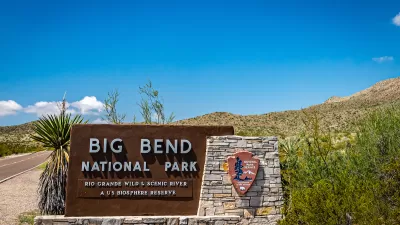Collecting an reusing rainwater is one way cities can deal with diminishing freshwater supplies. The more people can collect, the better. And people can collect more water if they have bigger containers.
The superbarrel was conceived by John Chang, a water engineer in Chicago who saw empty chemical shipping containers and wondered whether they could be reused in an urban setting. So he got in touch with Steve Wise, director of the natural resources program at the Center for Neighborhood Technology.
"Wise's experiment is a simple test of an old adage: size matters. It also represents something of a challenge to a key premise of grassroots environmentalism. Small eco-conscious gestures, we are often told, add up to a big help for the planet. Following that advice, municipal governments, water districts and utilities across the country have offered customers subsidies for buying rain barrels, in hopes of relieving pressures on urban water supplies and sending less polluted runoff into waterways.
Yet the standard household rain barrel holds only 55 gallons-perhaps enough to water the flowers but not enough, even collectively, to make a big dent in urban water problems. By contrast, the superbarrel holds up to 330 gallons. Its colossal dimensions (40 by 50 by 54 inches) carry the potential to change the dimensions of water policy, too."
FULL STORY: The Superbarrel Solution

Alabama: Trump Terminates Settlements for Black Communities Harmed By Raw Sewage
Trump deemed the landmark civil rights agreement “illegal DEI and environmental justice policy.”

Planetizen Federal Action Tracker
A weekly monitor of how Trump’s orders and actions are impacting planners and planning in America.

The 120 Year Old Tiny Home Villages That Sheltered San Francisco’s Earthquake Refugees
More than a century ago, San Francisco mobilized to house thousands of residents displaced by the 1906 earthquake. Could their strategy offer a model for the present?

In Both Crashes and Crime, Public Transportation is Far Safer than Driving
Contrary to popular assumptions, public transportation has far lower crash and crime rates than automobile travel. For safer communities, improve and encourage transit travel.

Report: Zoning Reforms Should Complement Nashville’s Ambitious Transit Plan
Without reform, restrictive zoning codes will limit the impact of the city’s planned transit expansion and could exclude some of the residents who depend on transit the most.

Judge Orders Release of Frozen IRA, IIJA Funding
The decision is a victory for environmental groups who charged that freezing funds for critical infrastructure and disaster response programs caused “real and irreparable harm” to communities.
Urban Design for Planners 1: Software Tools
This six-course series explores essential urban design concepts using open source software and equips planners with the tools they need to participate fully in the urban design process.
Planning for Universal Design
Learn the tools for implementing Universal Design in planning regulations.
Clanton & Associates, Inc.
Jessamine County Fiscal Court
Institute for Housing and Urban Development Studies (IHS)
City of Grandview
Harvard GSD Executive Education
Toledo-Lucas County Plan Commissions
Salt Lake City
NYU Wagner Graduate School of Public Service



























